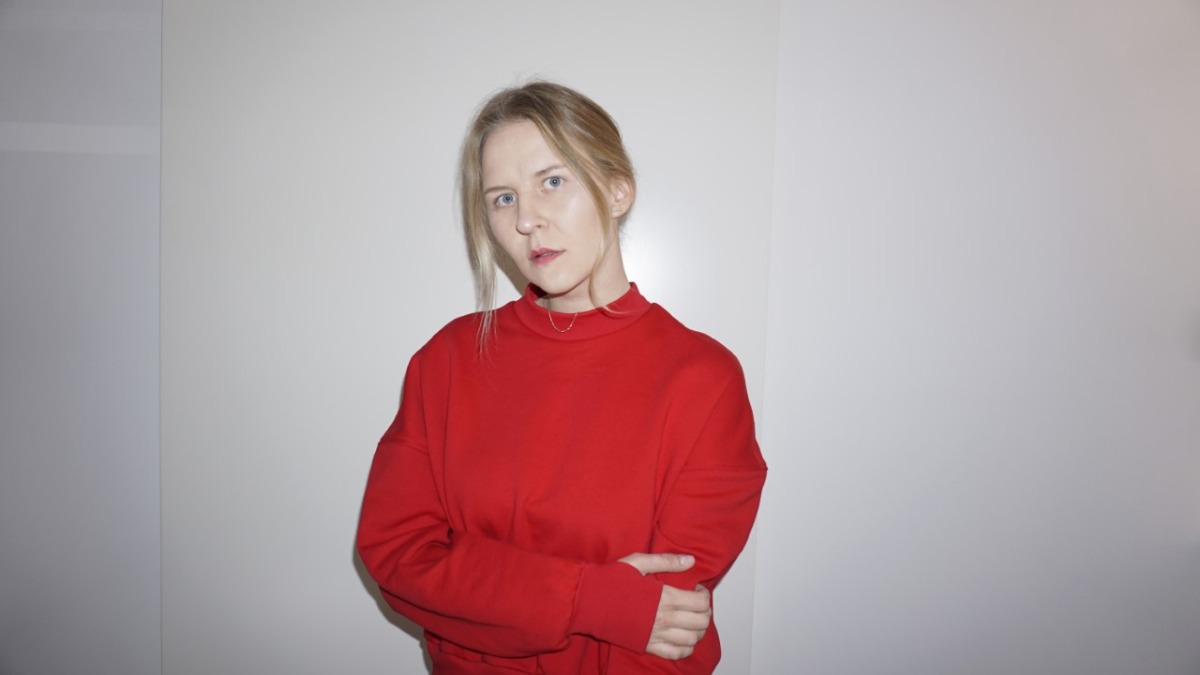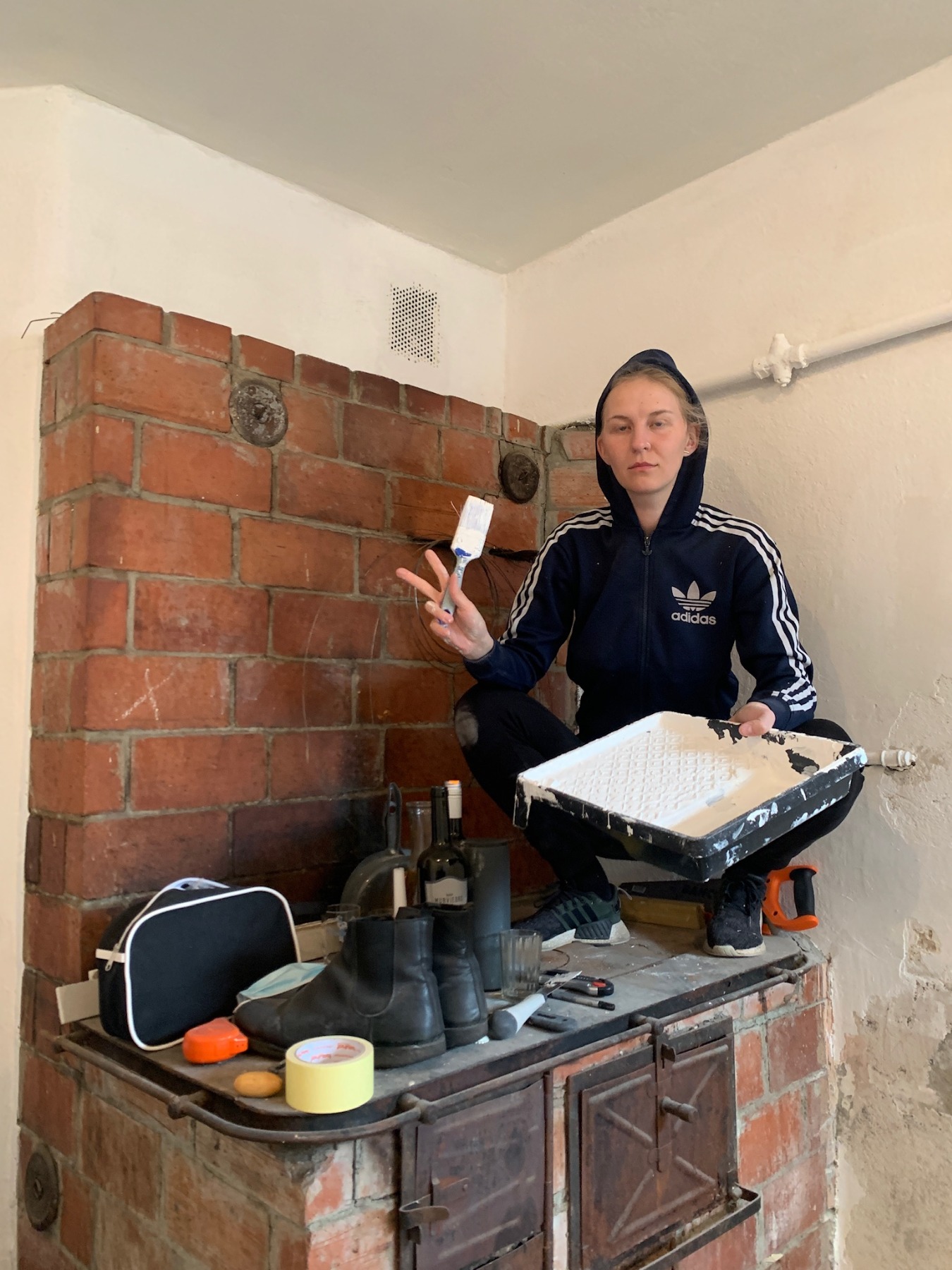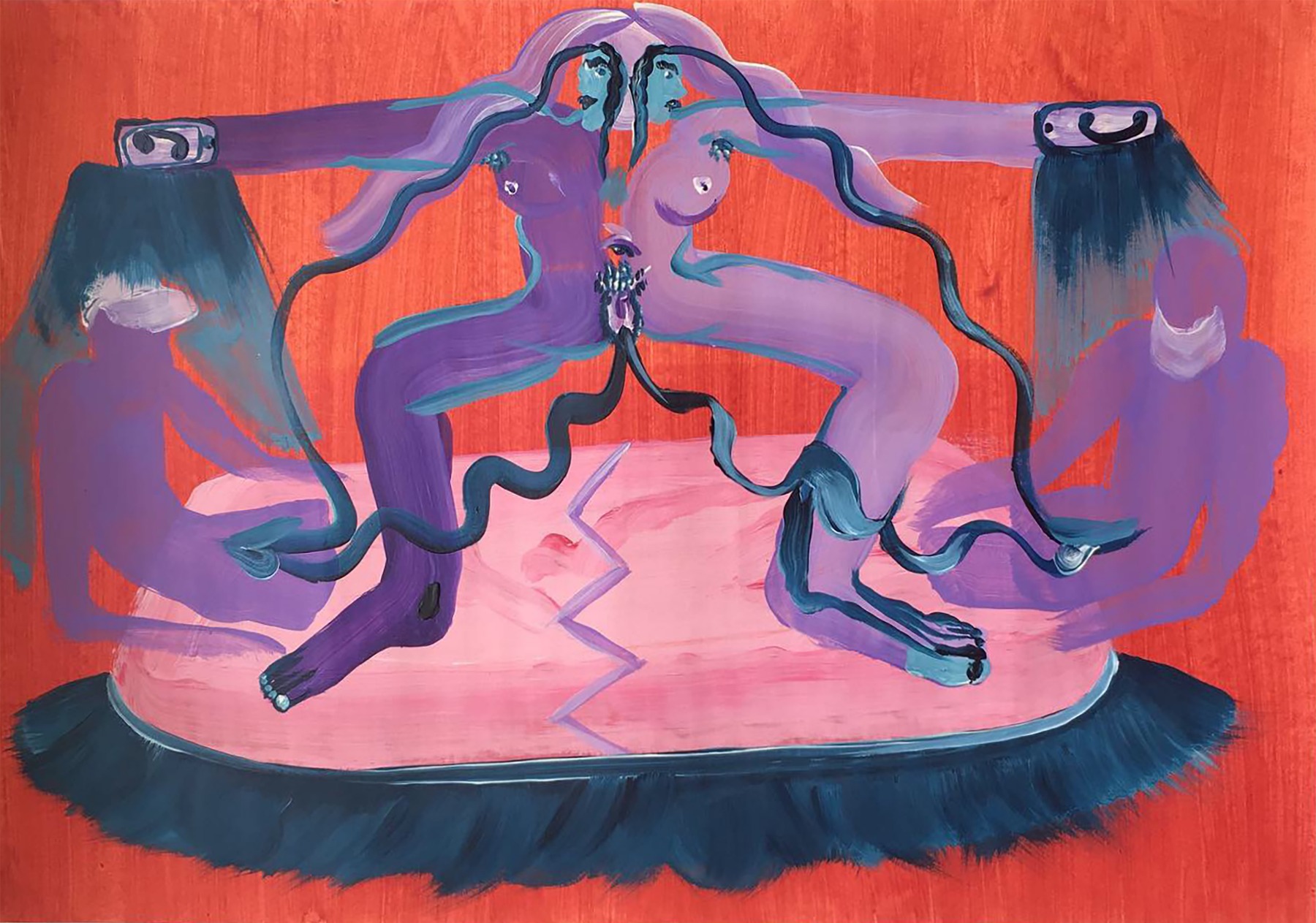
All galleries are subjective territories
A new art gallery, Hoib, opens in the basement of a residential building in Tallinn
On 29 May, the new contemporary art gallery Hoib will open in Tallinn at Tehnika 15. Its name is a clever and ‘accidental’ misspelling of the surname of the gallery’s founder, Lilian Hiob. Located in the below-ground level of a residential building, the idea to refurbish the basement into a gallery space was inspired by the need for an autonomous exhibition space for young artists and curators. Free from established institutional restrictions, the new gallery allows for artistic experimentation and curatorial freedom. The opening exhibition Sheets of past and layers of reality is curated by Lilian Hiob and brings together five artists: Alice Hagenburch, Raluca Manaila, Denisa Štefanigova, and Lisann Lillevere and Johanna Ruukholm. The artists explore the possibility of creating collectively through intimate narratives and objects. The show is inspired by Patricia Clough's idea of the ‘affective turn’, which states that pre-conscious intuition and impulses are affected by smells, hormones, gestures and the imaginary. All these feelings change according to the characteristics and conditions of our social relations. What we imagine to be individual and specific – impulses, attitudes, emotions and feelings – have, in fact, social, historical, and therefore shared dimensions.

Arterritory.com presents the interview with Lilian Hiob, the founder of Hoib gallery.
The opening of the gallery coincides with the re-opening of art and culture institutions after COVID-19 restrictions were eased in Estonia. To open a new gallery in such uncertain times is quite challenging; in the meantime, it is a possibility to mark a new era. Could you describe the concept of the Hiob gallery? What makes it unique and why did you decide to locate it in the basement of a residential building?
I have a feeling that in some way it was the right time to open up a new exhibition space just after COVID-19: people are not overwhelmed from lots of other events happening, so attention-wise, it has been good timing. Originally it was meant to open a month earlier, but I don’t see it as a bad thing to slow the process down – working a little longer on the ideas and artworks – as opposed to producing them like a machine full of anxiety and with a deadline haunting you.
Hoib gallery’s focus is not commercial; also, we are not supported by the government, which means we are free from the market’s requirements and we don’t have to show our visitors numbers to anybody. It’s an autonomous and also subjective space in the sense that I want to do it at my own pace and only work with people I feel good about in terms of sharing the space and ideas. In the end, all galleries are subjective territories; it’s just a question of whether you are aware of it: either you have asked yourself what and who your influences are while putting together a programme, or you haven’t.
I think every (small) gallery is unique and has the face of the people behind it — I want it to be a honest and sincere space, an intertwining space, a savage space, a noetic space. And I think this also explains the decision to locate it in a basement; the basement room does have a window and a built-in brick oven, however, so it’s not a dark and moldy basement. When I think about the room, I think about the blanket-forts kids build for themselves (we’ve all done that, right?).
I think every (small) gallery is unique and has the face of the people behind it.
Even when you’re in your own home, this blanket-fort is somehow so mystical for you as a kid – you get another perception on everything when you’re inside there, you have a different state of mind, your imagination opens up, you feel good and excited. I want to think of my basement space the same way.
In-process. A week before opening
The opening exhibition Sheets of past and layers of reality aims to expand our perception of the world, not only evoked by physical contact but through objects and shared spaces. It is clear that the lockdown has already impacted the way we behave, as well as our relationships with surrounding objects. Which are the most challenging ‘layers of reality’ that we have to deal with if we are thinking about art and the art scene?
The lockdown has been challenging indeed. You mentioned shared spaces, and in that light I have been thinking a lot about domestic violence. I’m thinking about women who live in an abusive relationship and have no financial stability to leave their partner; in Estonia it’s a huge problem.
If many of us enjoy spending more time with those we are close to, there are a lot of people for whom this is a nightmare, not only financially but mentally and physically as well.
In art, I have endlessly seen this term ‘the new reality’ that we will have to face after lockdown. I don’t see it, to be honest. What’s the new reality they are talking about if we are thinking about the influential galleries, art fairs, and biennials where a lot of money is involved? Art fairs want to start earning money again ASAP, and the same goes for the galleries. Big-name curators want their projects realized on time. There is a lot of finance involved in all of this.
The ‘new’ reality is the fact that we are once again, more clearly than ever, faced with the fact that we don’t have an alternative for the mega-capitalist world we have created as humanity.
If we are talking about smaller galleries and project spaces, I think they have always created an extra layer of reality and an alternative to the system – it doesn’t even depend on the virus situation all that much.
But what became very clear with the lockdown and all of the exhibitions closing down is that art is a very social thing. You can scroll through all the beautiful exhibitions, museums and galleries online, and it's a nice opportunity – educational as well – but it works more like an archive or a database. If I’m saying art is a social thing, I’m not even thinking that much of a crowded opening, which is also undeniably one of the art world’s specialties. I’m thinking about the relationship between a viewer and an artwork – you exist in the same space with the artwork, it’s very cognitive, but this lockdown has taught us (at least me) that this is essential while looking at art. Your thoughts flow differently when you are in a room with the work versus when you are looking at a photo or a 3D image of it. Spontaneity is something that is taken away with these on-screen exhibitions.
The ‘new’ reality is the fact that we are once again, more clearly than ever, faced with the fact that we don’t have an alternative for the mega-capitalist world we have created as humanity.
During the lockdown, digital visits to world-famous museums/art institutions became enormously popular. In the meantime, as the statistics here in the Baltics indicate, visitor numbers in the first days after the re-opening of the major museums are not very high. Why is that? Are people still afraid, or is the way in which we approach art already changing?
It’s exciting to browse the world-famous institutions, of course, and it’s great that they are available online! I have to be honest – I developed a different sort of anxiety when every exhibition and museum went online: HOW can I consume all this data? I want to see it all, and this is all available, but I had a hard time at first.
I am absolutely sure, though, that online viewing rooms are not going to replace physical exhibitions. As I mentioned in the previous question, art is a cognitive and social thing; we need art in a physical form, and I’m absolutely sure of this.
Why haven’t people been massively visiting museums and galleries after lockdown was lifted? I think it’s normal – people are more cautious. If it was legally forbidden to go to a museum yesterday, but today it’s allowed, that’s just a political decision – the world and the virus haven’t changed overnight due to the fact that the government decided to ease restrictions.
It takes time for all of the museums and galleries to fill up with people again. It’s normal; people are thinking with their own heads and not mass-storming a small gallery a day after lockdown has been lifted.
I am absolutely sure that online viewing rooms are not going to replace physical exhibitions.
It would be the same if you have a broken leg and the day after the cast is removed, you decide it’s a good idea to climb a tree or go running. You don’t do that; you take it in with your mind and understand that it’s better to take extra care and integrate slowly again.
Denisa Štefanigova. Him or him. 2020.
Restrictions have eased, but there are still worries about a second wave of the pandemic, not to mention that questions regarding climate issues and our role as humans have become even more important. What can each of us, as participants in the art world, try to do differently?
Quality over quantity when talking about the art world. I’m thinking: produce a little less, but show it longer in the exhibition space; talk to people; take the time to explain the work and the ideas.
Use airplanes less, if possible, and connect with the local scene – smaller cities, for example, where there are lots of interesting things happening. I don’t want to ‘flight-shame’ individuals when, in reality, it’s in the hands of huge corporations who need to change something. As the lockdown taught us, interacting with people is an essential part of the art world, so we cannot just stop flying and do Zoom meetings to save the world.
I’m not a perfect example myself, but this is the direction I want to move towards.
When we talk more generally, people need to understand that they do not own the land we are inhabiting – we are part of it. Our actions have consequences.
Use airplanes less, if possible, and connect with the local scene – smaller cities, for example, where there are lots of interesting things happening.
What is the role of the artist (and also the curator) in the post-pandemic era we are facing now?
I know I sound like a romantic saying this, and also I don’t think all artists or curators have the same motivations to create, but I truly believe the role of art is to open up alternative paths; to reveal the systems we take as an objective truth; to show that there is more that we could see; to fight against the system; to initiate dialogues; to make us think; to make us discuss; to make us gain knowledge.